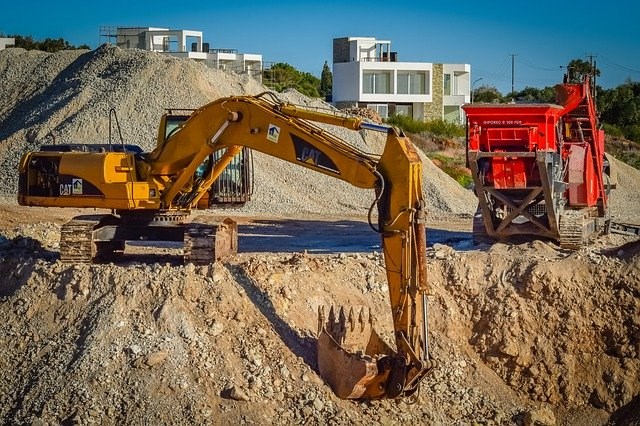8 reasons why hydraulic hoses break faster
There are many different reasons why hydraulic hoses break, but the most common mistakes can be avoided by taking some precautions.
Below we will review the most common mistakes and tell you how to avoid them.
1. Erosion
Erosion of the inner core of the hydraulic hose often causes leakage. The erosion may be due to a high velocity of the media/fluid or small particles in the media/fluid.
To avoid erosion of the hydraulic hose, it is a good idea to use a flow kapacity nomogram, to determine the correct hose size in relation to the recommended maximum velocity.
Also make sure that the hose is not bent too much, as this can make it difficult to get a flow of liquid. The media must also not be too hard for the inner tube of the hose. Furthermore, it is important to observe the maximum bending radius of the hose.
2. Fluid compatibility
Pollution in the system and external leakage can be directly caused by fluid compatibility issues. This can cause damage to the inner tube of the hose.
Therefore, it is important that the hydraulic hose you use is compatible with the fluid to be transported in the hydraulic hose. It is not enough just to ensure that fluid is compatible with the inner core, it must also be compatible with the outer layer, fittings and o-ring/seal. To ensure that your hose is compatible with the fluid to be used, you may want to check this chart : Chemical Resistance Diagram for Hydraulic Hoses.
3. Dry air/ aged air
The inner tube of the hose can develop many small cracks due to dry or aged air. This damage can be very difficult to identify as the hose will still be flexible. Typically, there will be no signs of cracks where the fittings are mounted.
To avoid problems with dry and aged air, make sure that your hydraulic hose is classified for extremely dry air if that is the environment the hose is in daily. Hydraulic hoses where the inner tube is made of PKR or EPDM rubber are preferable to avoid problems with dry and aged air.
4. Minimum bend radius
Hose joints can easily break if the minimum bend radius is not met. Therefore, always check the recommended bend radius when installing a hose. If your hose does not meet the recommended bend radius, replace the hose to fit.
5. Insertion depth
If you have crimped the hose yourself, make sure it has been done correctly. If the hose and fittings are not mounted correctly, it can create very dangerous situations. Fittings must be pushed completely onto the hydraulic hose to comply with the recommended insertion depth. If the insertion depth is not met, the fitting can be blown off, causing serious damage/injury.
To ensure the correct insertion depth, Parker has made insertion blocks that make it easy to mark the insertion depth on the hose.
We always ensure that our fittings are pushed on properly when we assemble and crimp a hose for you.

6. Improper assembly
Contamination in the hydraulic hose can cause various problems. When a hydraulic hose is cut, metal particles and dirt can enter the hose. If these are not blown out before assembly, they can cause small breaks in the inner tube of the hose, which can result in leakage.
To prevent contamination, it is important to clean the hose before mounting the fittings on the hose. The hose should therefore be blown from both ends to remove particles and dirt before assembly.
When fittings are crimped on the hose, it is important to put caps on the ends, to ensure that the hose remains clean until it is to be used.
At Hymatik, we always blow the hose from both ends both before and after assembly, after which we put caps on the fitting ends.
7. Heat aged
Damage to the hose can occur if the hydraulic hose becomes overheated in the application. Hydraulic hoses that are overheated become very stiff. The inner core hardens and begins to crack.
To prevent the hose from overheating, it is important to choose a hose that can withstand the heat of the application. Heat shields and other shielding can be used to protect the hose from nearby high temperature areas.
8. Slid
Hydraulic hoses are exposed to harsh environments every day and will eventually break. If a hydraulic hose is not inspected regularly, wear on the hose can cause the hose to burst or leak. If a hose constantly rubs against an object or another hose, it can wear down the outer layer and the reinforcement layers.
The outer layer (cover) protects the hose and therefore signs of wear on the outer cover is a warning that something must be done soon before the hose begins to leak. If the hose needs to be resistant to constant wear, you can get a protective cover sleave for your hydraulic hose to meet different applications. Some hydraulic hoses are also available in variants: ThoughCover and SuperTough, which are hoses with extra strong cover that are more resistant to wear.
With basic knowledge and training, many broken hoses can be avoided. Make sure you choose the hose that meets the specifications of your application and you will get the hose with the longest lifetime.
We have made a concrete guide to 5 parameters: Size, Temperature, Application, Media and Pressure, which you must be aware of when choosing the right hose.
Read here.
Proper hose assembly and mounting will also increase hose life, reducing downtime and maintenance costs.





